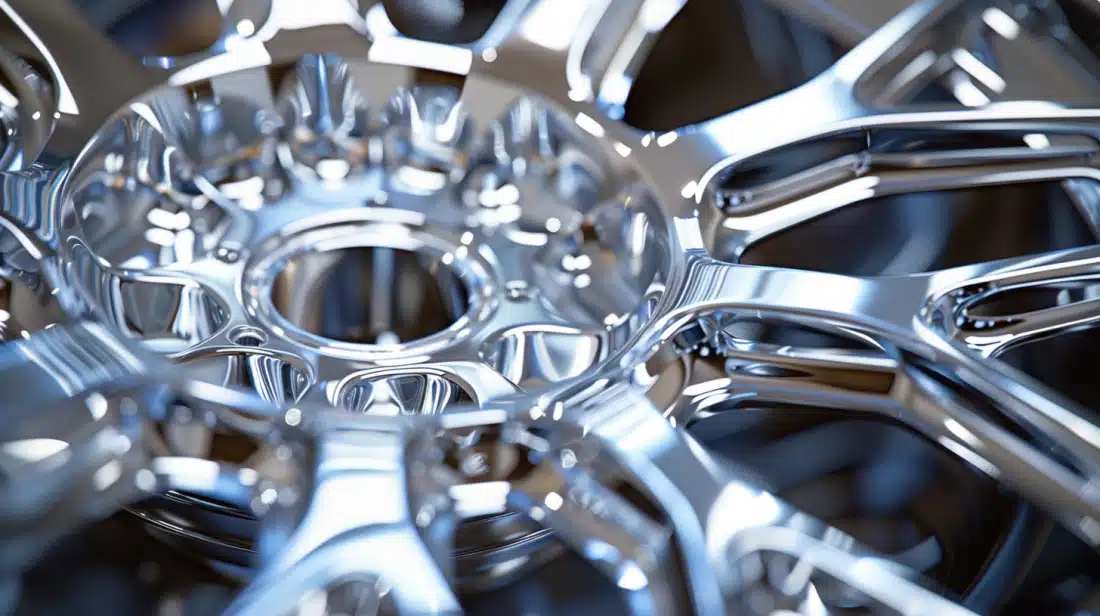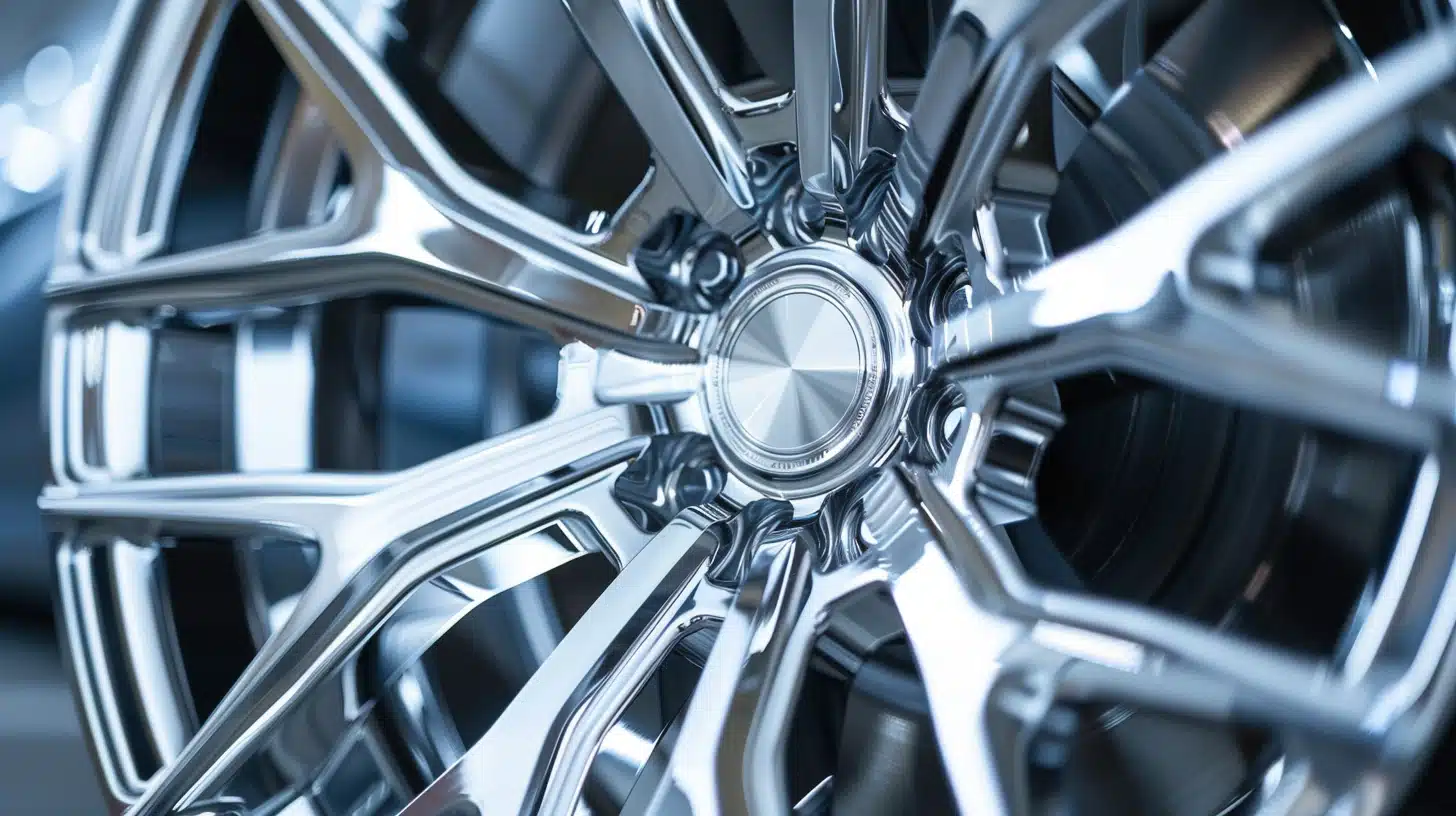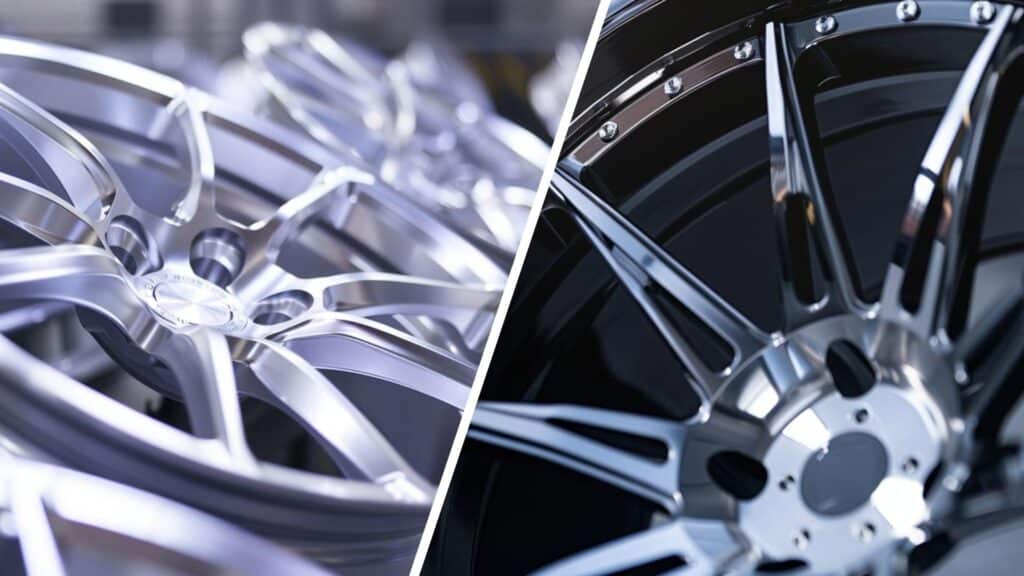Are you torn between steel and aluminum when choosing the right rims for your vehicle? You’re not alone.
Many vehicle owners struggle with this decision, unsure which material best suits their needs and budget.
The good news is that understanding the pros and cons of each can help you make an informed choice.
This article will explore the key differences between steel and aluminum rims, discussing durability, weight, aesthetics, and cost.
By the end, you’ll have a clear idea of which type of rim is the perfect fit for your vehicle.
So, let’s dive in and discover the world of steel and aluminum rims!
Why Is It Important to Choose the Right Rims?
Selecting the right rims for your vehicle is a crucial decision that can significantly impact its performance, safety, and overall look.
The material your rims are made of plays a vital role in your vehicle’s handling, fuel efficiency, and the wheels’ longevity.
Two main options stand out when choosing the material for your rims: steel and aluminum.
Each has advantages and disadvantages, so it’s essential to understand their differences to make an informed decision that best suits your specific needs and preferences.
Advantages of Steel Rims

1. Durability
Steel rims are the perfect choice for vehicles frequently facing challenging environments, such as off-road trails or industrial sites.
Their robust construction allows them to withstand the rigors of these demanding conditions without easily bending or cracking, ensuring your wheels remain intact even under extreme stress.
2. Cost
Compared to aluminum rims, steel rims offer a more budget-friendly option.
Their affordability makes them a cost-effective choice for vehicles primarily used in tough conditions, focusing on functionality rather than fancy designs or aesthetics.
3. Winter Performance
The heavier weight of steel rims can be advantageous during the winter months.
The added weight helps improve traction and stability on snowy or icy roads, providing a more secure and confident driving experience in challenging weather conditions.
Disadvantages of Steel Rims
1. Weight
The increased weight of steel rims can have a negative impact on vehicle performance.
The added weight can result in slower acceleration and reduced fuel efficiency compared to lighter aluminum alternatives, which may concern some drivers.
2. Aesthetic and Variety
Limitations Steel rims have limited options for finishes and styles, which may not appeal to vehicle owners who value customization and a more personalized look.
The aesthetic choices available for steel rims are often more basic and useful compared to the wide array of designs offered by aluminum rims.
3. Corrosion
One of the main drawbacks of steel rims is their susceptibility to rust and corrosion.
Regular maintenance, such as cleaning and painting, is crucial to prevent this.
Neglecting to care for steel rims properly can lead to unsightly rust and potentially compromise the wheels’ structural integrity over time.
Advantages of Aluminum Rims

1. Weight
Aluminum rims are significantly lighter than steel ones, offering several performance benefits.
The reduced weight helps improve fuel economy and enhances the vehicle’s overall handling, resulting in a more responsive and agile driving experience.
2. Design
Flexibility One of the most appealing aspects of aluminum rims is the wide variety of designs and finishes available.
From sleek and modern to classic and sporty, aluminum rims cater to a broad range of aesthetic preferences, allowing vehicle owners to customize their wheels to suit their style.
3. Corrosion
Resistance Aluminum rims naturally resist rust and corrosion, a significant advantage over steel rims. This inherent corrosion resistance reduces the need for frequent maintenance and helps maintain the wheels’ attractive appearance for a longer period.
Disadvantages of Aluminum Rims
1. Cost
The initial cost of aluminum rims is generally higher compared to steel rims.
While the long-term value of aluminum rims may justify the investment for some, the upfront expense can deter budget-conscious buyers.
2. Durability
Concerns Although lightweight and corrosion-resistant aluminum rims are more susceptible to impact damage than steel rims.
This vulnerability may not make them the best choice for vehicles frequently encountering rough terrain or prone to hitting curbs or potholes.
Comparison of Steel and Aluminum Rims
| Feature | Steel Rims | Aluminum Rims |
|---|---|---|
| Weight and Durability | Heavier, which contributes to durability but decreases performance metrics like acceleration and fuel efficiency. | Lighter, enhancing vehicle handling, acceleration, and fuel efficiency. |
| Impact Resistance | High resistance to bending and cracking, ideal for rough terrain and heavy-duty use. | Lower impact resistance compared to steel. |
| Maintenance and Longevity | It requires regular maintenance to prevent rust, but it can last many years with proper care. | Less maintenance due to natural corrosion resistance, generally durable. |
| Design and Aesthetic Options | Limited design options, typically utilitarian in appearance. | Wide range of designs and finishes, allowing for extensive customization. |
| Corrosion Resistance | Susceptible to rust, needing preventive maintenance. | High corrosion resistance, maintaining appearance with minimal upkeep. |
Considerations for Selecting the Right Wheel Material
Primary Driving Conditions
- Everyday Driving: Aluminum rims are often the preferred choice for vehicles primarily used for commuting on paved roads. Their lighter weight contributes to better fuel efficiency, making them a practical option for daily driving.
- Off-Road or Rough Terrains: Steel rims shine for vehicles that frequently tackle challenging environments, such as off-road trails or construction sites. Their superior durability and resistance to damage make them the ideal choice for these demanding conditions.
Performance Needs
- Handling: Aluminum rims have a significant advantage in handling. The reduced unsprung mass of aluminum rims enhances the vehicle’s agility and responsiveness, which is particularly beneficial for high-speed driving and navigating tight turns.
- Traction: In situations where traction is paramount, such as winter conditions or slippery surfaces, steel rims have an edge. The added weight of steel rims helps provide better grip and stability, ensuring a safer and more controlled driving experience.
Budget Constraints
- Initial Cost: Steel rims offer a more affordable upfront cost for budget-conscious buyers. Their lower price point makes them attractive for those looking to keep initial expenses down.
- Maintenance Costs: Although steel rims are less expensive to replace, they may require more frequent maintenance if exposed to corrosive environments without proper care. Regular cleaning and painting are necessary to prevent rust and maintain structural integrity.
Conclusion
Choosing between steel and aluminum rims ultimately depends on your needs and preferences.
Steel rims are durable and affordable, making them ideal for heavy-duty use and winter driving. In contrast, aluminum rims provide superior performance, style, and corrosion resistance, perfect for everyday driving and customization.
By carefully considering factors such as your vehicle’s primary use, desired aesthetics, and budget constraints, you can make an informed decision to enhance your driving experience and keep your car looking its best.
Whether you prioritize function or form, there’s a rim material that will suit your needs.
So, take the time to evaluate your options and choose the rims that will help you get the most out of your vehicle.
Your perfect set of wheels is waiting!


